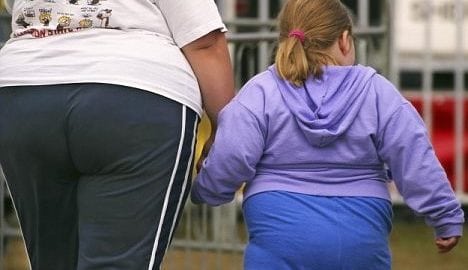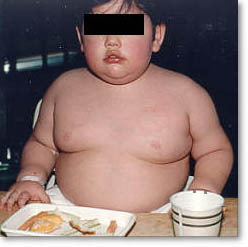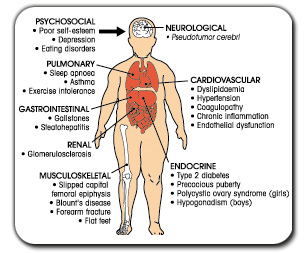Here’s the thing. Adults have control over and choices about how to live their lives. In the overwhelming majority of cases, children do not. Yet, in the overwhelming majority of cases, adults have control over their children’s health.
Amazingly, approximately one of every three children between the ages of five to 11 is either overweight or obese. It’s not too late. If you’re looking across the breakfast table at a child that’s overweight or obese, please take the time to learn about childhood obesity, the consequences of allowing it to continue and the proactive steps you can take to ward off those consequences. Read on.
If by chance you’re thinking that you have no idea if your child is obese or just looks that way because everyone else in the family looks that way (is “genetically predisposed”), perhaps the first step is to get a better understanding of normal vs. abnormal.
No matter you perceptions of how “good” or “healthy” it may look, normal is less a function of appearance than a reflection of your heart and other organs’ abilities to perform their tasks. Using the heart as an example (and admittedly being overly simplistic), it is a muscular pump serving the purpose of moving blood around the body, delivering oxygen and nutrients to the cells of your various organs. The more weight it has to pump against, the harder the task becomes, and the heart will eventually increase the pressure to compensate (i.e., develop high blood pressure). The sooner this process starts, the more at-risk you are for the consequences of the development of high blood pressure and other conditions (including cancer) down the road. Beside high blood pressure, other health issues associated with childhood obesity include the following:
- Breathing problems
- Joint problems
- Diabetes
- High cholesterol
It is important to acknowledge that “big” is not always unhealthy. The amount of body fat changes with age and based on where children are in their growth curve. A physician will take these things into consideration when you have your child evaluated for clinical obesity. On the other hand, please understand the social pressures children may face at school from being overweight. If they perceive a problem to exist, one does.
In the next Straight, No Chaser, we will discuss in detail what you can do to help children who are obese. To no one’s surprise, a heavy dose of healthy eating and physical activity will be on the prescription. As a prelude to that conversation, I will suggest that you should not be placing a child on a diet without a physician’s order. Healthy eating habits will be the way to go.
Overall, just remember that either the positive or negative habits children learn are likely to last a lifetime. As a parent, you will be best positioned to guide children along the appropriate path.
Feel free to ask any questions you may have on this topic.
Order your copy of Dr. Sterling’s new book Behind The Curtain: A Peek at Life from within the ER at jeffreysterlingbooks.com, iTunes, Amazon, Barnes and Nobles and wherever books are sold.
Thanks for liking and following Straight, No Chaser! This public service provides a sample of what http://www.SterlingMedicalAdvice.com (SMA) and 844-SMA-TALK offers. Please share our page with your friends on WordPress, like us on Facebook @ SterlingMedicalAdvice.com and follow us on Twitter at @asksterlingmd.
Copyright © 2016 · Sterling Initiatives, LLC · Powered by WordPress





